Chronicall on Avaya IP Office - Server Installation
This is a complete server installation guide for Avaya IP Office.
Note: If you are upgrading from 3.12 to 4.0, it is important to note that you must have version 3.12.6a or higher in order to upgrade to 4.0.
1.0 Chronicall Specs
Avaya IP Office Supported Versions
10.0 or higher
IP Office Connection
Release 10.0 and above DevLink3
Virtual Machine Support
Yes
Avaya Licenses
IP Office 10.0+
User Computer Requirements (Web Interface)
Chrome, Firefox, Safari, Edge, or Opera
1280 x 720 or higher screen resolution
User Computer Requirements (Chronicall Desktop)
Windows 7+ (64 bit)
Max OS X 10.7.3+ (Intel-based)
1.1 Chronicall Server Requirements
The following metrics and specifications assume the server is dedicated to hosting Chronicall and that no other resource-intensive software is running. Virus and security scanning software should be configured to not actively scan the Chroniall database, otherwise disk IOPS requirements will be higher than what is listed.

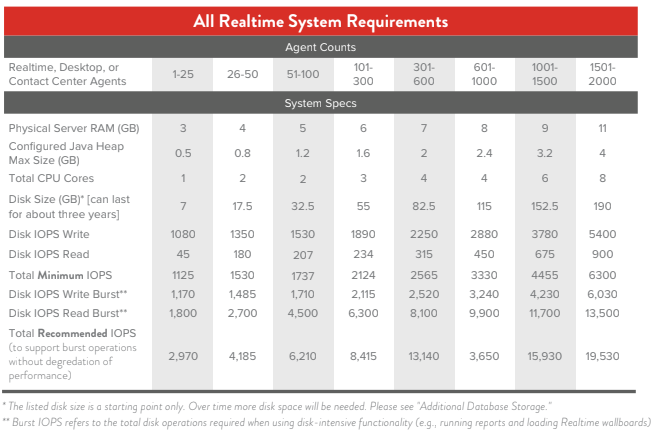
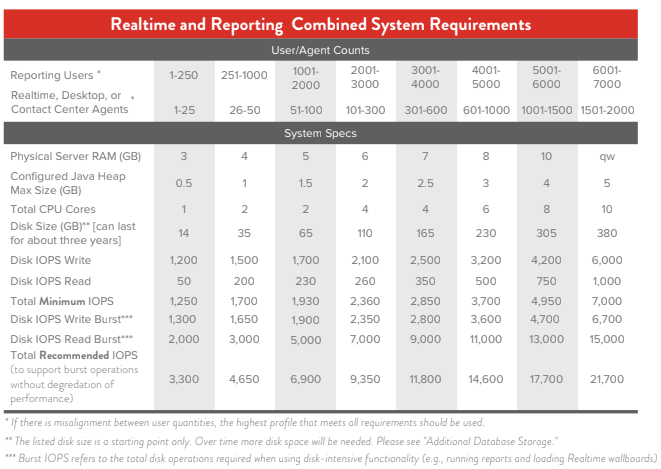
1.2 Additional Database Storage
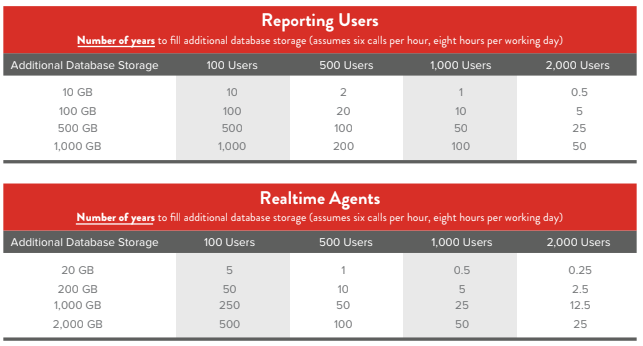
1.3 Recording Library Server Requirements
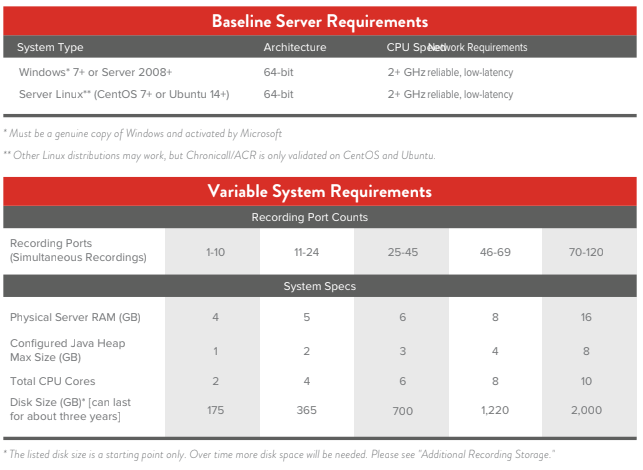

1.4 Maximum Recording Port Capacity

1.5 Other Installation and Service Information
Installation Format
downloadable setup file
Installation Location
Chronicall cannot be installed on the same PC/server as IP Office Server Edition or the Application Server. Recording Library and Chronicall can be installed on the same PC/server as long as the combined resource usage does not exceed the server resource limits.
Listening Network Ports
80, 443, 8443, 9443, (SSL nginx proxy)
Database
BlueDB
Web Server
Apache Tomcat
User Interface
Web Interface and Chronicall Desktop Application
Chronicall OVA
https://chronicall-installation-ova.s3-us-west-1.amazonaws.com/Chronicall4_2_2b.ova
Username: administrator
Password: ximapass1!
2.0. IP Office Configuration
Prior to installing and configuring the Chronicall software, the IP Office configuration settings will need to be changed in order for Chronicall to perform at its highest level.
2.1. Report on Hunt Group Login/Logout
Avaya Call Reporting can report on Realtime, Desktop, and Contact Center agents' hunt group login/logout. This is done by using the checkbox tool within IX Workplace on IP Office release 11.1.1.0 build 209 or higher.
2.2. Enable Devlink3
The Devlink3 protocol is available for TCP or TLS. The IP Office Ports for TCP is 50797 and for TLS is 50796.
- From the IP Office Configuration tree in the left pane select File -> Advanced -> Security Settings.
- Select System -> the Unsecured Interfaces tab and check the TAPI/Devlink 3 box.
2.3. Administer Group Rights for Devlink3
- From the IP Office Security Administration menu select Right Groups.
- Create a new Rights Group and enter a descriptive name In the New Rights Group Details Window. For example, Devlink3.
- Go to the Rights Groups menu and select the Group created in step 2.
- Open the Telephony API’s tab in the right window.
- Check the DevLink3 option and press OK.
2.4. Administer Service Agents
- From the IP Office Security Administration menu select Service Users.
- Create a new Service Agent and enter the desired name and password in the New Service Agent Details window.
- Go to the Service Agent menu and select the new User Name created in step 2.
- Select the Rights Group Membership in the bottom right pane and check the newly added rights groups.
- Press OK.
2.5. IP Office System Settings
- Go to IP Office Manager -> System -> Telephony and ensure Show Account Code is checked.
a. For each Group do the following:
I. Ensure the Group isn’t excluded from directory (uncheck Exclude From Directory)
II. Set each group to Longest Waiting, Sequential, or Rotary for accurate reporting.
III. If Queuing is enabled under the Queuing tab, then set the queue type to Assign Call on Agent Alert
b. In Agent Settings do the following:
I. Ensure the Agent isn’t excluded from the directory (uncheck Exclude From Directory)
II. Go to the Telephony -> Supervisor Settings tab and check Force Login
2.6. Voicemail Pro Settings
- For each Transfer action, ensure that the “Source of transfer (displayed on phone)” field under the Specific tab is blank.
3.0. Chronicall Standard Installation
Chronicall is a call reporting software that offers a revolutionary set of features designed to overcome the limitations of traditional call history and reporting software. With a thin-client web interface, Chronicall provides detailed and accurate information by connecting directly to your phone system.
Follow the steps through this installation guide in order to setup, install, and configure Chronicall and Recording Library.
3.1. Chronicall
Installation
- Note: Run the Setup file as an Administrator
- Select the location where you would like the Chronicall setup files to be extracted. C: is default, but you may extract to the location of your choice.
- Read the End-User Agreement. Select "I accept the agreement" if you agree.
- Select the location where you would like Chronicall to be installed. C: is default, but you may install it on the drive of your choice.
- Input the serial key that was provided to you by Avaya.
- The Apache Tomcat Port information will automatically populate. It is recommended to leave the port as the default value but you may change this port if needed.
- Select install.
Setup
- Once the install is finished, open Internet Explorer and enter the given web address.
- Use the default Username and Password to login. This should be “Administrator” and “password”, both are case sensitive. You will be prompted to change the password once you log in.
3.1.a Chronicall and the Recording Library share the same Server (VRTX)
If Chronicall and the Recording Library share the same server then the Recording Library may have already been installed. Verify or install the Recording Library by doing the following:
- Open your server’s local services and verify that the Chronicall Recording Library exists.
- If it does not exist, download and run the Chronicall Update (not the Recording Library set up).
a. When prompted to install the Recording Library on this machine select “Yes”.
b. Follow the installation and when done repeat Step 3.1.a 1.
NoteIt is not recommended having Chronicall and the recording library share the same server.
3.1.b Chronicall and the Recording Library do not share the same Server (VRTX)
If Chronicall and the Recording Library do not share the same server then the Recording Library requires a separate setup file to be installed on the server where Chronicall is not installed.
Install the Recording Library by doing the following:
- Download the Recording Library Setup or App Installer (for Chronicall 3.95 and above) here. You will need to enter your Chronicall Serial Key.
- Follow the install steps.
a. When prompted to enter the Chronicall IP address, enter the server address where Chronicall is installed, not the server where Recording Library will be installed.
3.2 Recording Library Setup and Installation for IP Office
With networks that have Voicemail Pro and Windows there are two options when setting up the Recording Library. Follow the steps under the appropriate section that corresponds best with your network settings.
3.2.a Chronicall and Voicemail Pro share the same Server (Windows)
If Chronicall and the Recording Library share the same server that is hosting Voicemail Pro, then the Recording Library may have been installed. Verify or install the Recording Library by doing the following:
- Open the server’s local services and verify that the Chronicall Recording Library service exists.
- If the Recording Library service does not exist do the following:
a. Download an Chronicall update here. (You will need to enter your Chronicall Serial Key.)
b. Run the Chronicall update.
c. Select “Yes” when prompted to install the Recording Library. - Go to section 6 to configure the Recording Library after you ensure the Recording Library has been installed.
3.2.b Chronicall and Voicemail Pro do not share the same Server (IP Office)*
If Chronicall and the Recording Library do not share the same server that is hosting Voicemail Pro then installing Recording Library requires a separate setup file to be installed on the server with Voicemail Pro. To install the needed separate file follow these steps:
- Download the setup file here (You will need to enter your Chronicall Serial Key.)
- Follow the steps through the installation
- Go to section 4 to configure the Recording Library after you ensure the Recording Library has been installed.
3.3 Recording Library Setup for Voicemail Pro on Linux
With networks that have Voicemail Pro and Linux, there are three options when setting up the Recording Library. Follow the steps under the appropriate section that corresponds best with your network settings.
3.3.a Chronicall and Voicemail Pro share the same Server (Linux)
If Chronicall and the Recording Library share the same server that is hosting Voicemail Pro, then the Recording Library may have been installed. Verify or install the Recording Library by doing the following:
- View the /etc/init.d directory and look for recording_library.
- If it does not exist, download the Apps Installer. You will need to use -chron_docbase with the full URL instead of -chron_port and -chron_ipdownload
a. Download the Apps Installer for Linux here (You will need to enter your Chronicall serial key)
b. Navigate to most recent build of Chronicall and right click on the Apps option of the build that suits your needs. Then select "Copy link address" and paste that copied link onto a notepad.
c. After that is complete, navigate to a directory you would like to place the Chronicall installers. This can be a directory tailor-made for this purpose so you can delete the files once the task is done. Once there, type the following command: wget -O '(Name of your choice).tar.gz' 'https://(rest of the link that was copied from Chronicall)' After executing, you should see something like this (boxed in red):
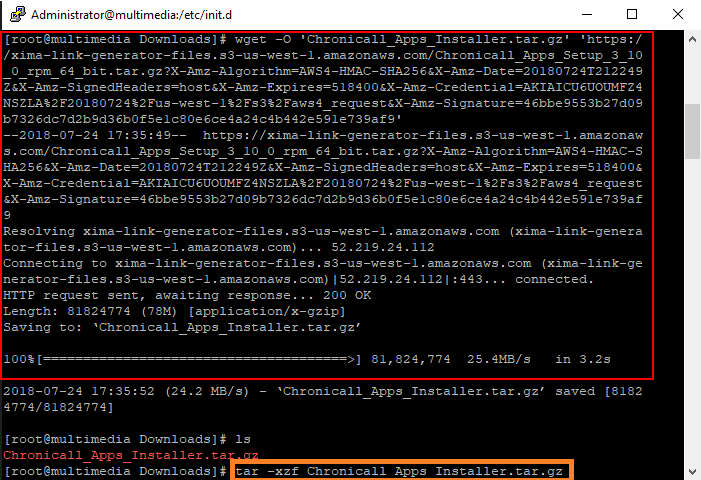
d. Here, we run our next command (boxed in orange above): tar -xzf (Name we specified earlier).tar.gz
e. After this is done and our files inflated, we can now navigate to the newly created directory hosting our installer (boxed in purple and yellow).
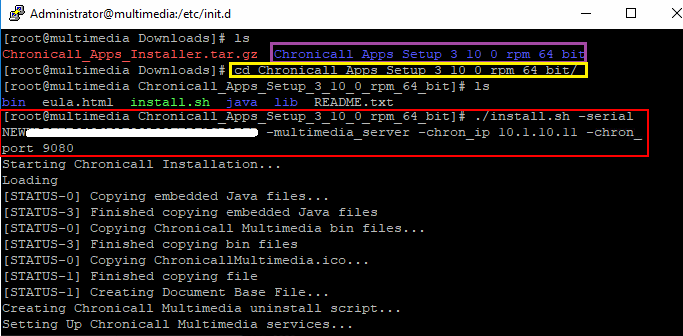
f. Here, we type in the following command (boxed in red above): ./install.sh -Applicable_Service_Name (reference items below) -chron_docbase (IP address of Hosting Chronicall Server:Port) I.e., http://10.0.0.0:9080
g. Executing this should be the last and final step.
3.3.b Chronicall and Voicemail Pro do not share the same Server (Linux)*
If Chronicall and the Recording Library do not share the same server that is hosting Voicemail Pro then installing Recording Library requires a separate setup file to be installed on another server that can communicate with the Chronicall server and the Voicemail Pro server. To install the needed separate file follow these steps:
- Download the setup here
- Change to a common directory.
a. Ex. The Administrator home directory: cd/home/Administrator - Download the Recording Library Setup for Linux onto the Linux server.
a. Right click the Recording Library download and select Copy Link Address.
b. Enter: wget -0 recording_library.zip “Enter download link from step a here” - Unzip the downloaded file: unzip ipoffice_chronicall_update_3_6_50.zip
- Run a command to change update.sh into an executable file: chmod +x update.sh
- Launch update.sh: ./update.sh
4.0. Assigning Licenses
When you first login to Chronicall after installation, it will ask you to add IP Office Connections and assign licenses.
4.1. Assigning IP Office Connections
The first window that you see after you login into Chronicall will provide the opportunity to add your IP Office Connections. To add IP Office connections do the following:
- Select the “Add” in the bottom right hand corner.
- API: Select Devlink 3 (Recommended)
- Site Name: The default site name will be IP Office. Change this if desired (recommended if you are on a SCN or Server Edition).
- IP address of IP Office: Put in the proper IP address for your IP Office connection.
- DevLink3 Use TLS: Set to “True” if using TLS.
- DevLink3 Username: Enter the correct username to your DevLink3.
- DevLink3 Password: Enter the correct password to your DevLink3.
- External Trunks: Leave default.
- Hit “OK”.
- If you are on an SCN or Server Edition, you can add each additional site by repeating steps 1-9. In order for Chronicall to be accurate, each IP Office within the solution should be added.
- Once you are finished adding the IP Office connections click “Next”.
4.2. Assigning Licenses
After the IP Office connections are configured, you will now be able to assign Chronicall licenses. Dependent on the licenses you have purchased, you will be prompted to configure additional settings and can assign agent licenses to the desired agents. The following windows that are presented will coincide with the modules that you have purchased:
DEFAULT AGENT
You will be prompted to update the password for the Administrator account.
LICENSED AGENTS
The base licenses are static, per-agent licenses. They are assigned to a specific agent and cannot be shared. This is necessary for basic reporting and other software functionality. The base licenses can be transferred to other agents as needed. To assign base licenses do the following:
- Select the desired agents to monitor in Chronicall.
- Hit Finish.
RECORDING RETENTION POLICY
A Recording Retention Policy should be created if desired. Fill out the options as needed. If a Recording Retention Policy is not needed, uncheck the option to “Delete old recordings to make room for new recordings” and click Finish.
SCHEDULED BACKUPS
A Scheduled Backup should be created. Choose the frequency, add a backup path, and limit the total backups retained as you desire. Once completed, press Finish.
AGENT REALTIME
Agent Realtime licenses are static, per-agent licenses. They are assigned to a specific agent and cannot be shared. The Realtime Agent license can be transferred to another agent as needed. To assign Realtime Licenses do the following:
- Select the desired agent(s) to monitor in Realtime
- Hit Finish.
AGENT DASHBOARDS
Agent Dashboards licenses are concurrent licenses, meaning that they can be shared as long as two agents are not utilizing it simultaneously. The licenses can be prioritized, listing agents based on high/low priority.
- In the left-hand column, select the desired agent and select the center arrow pointing to the right.
- Repeat with each desired agent.
- Agents will be prioritized from top to bottom. To prioritize the agents, use the “Up” and “Down” buttons on the right to change an agent’s position.
- Hit Finish
5.0. Recording Library Installation for Active Recording
When installing Recording Library there are two standard choices: Devlink Active Recording and Voicemail Pro. Follow the steps under the specific section that matches your needs. This section covers the steps to install and configure Active Recording. Note that Active Recording requires Avaya Call Reporting Recording Library licenses.
5.1. Recording Library Installation
- Download the Avaya Call Reporting Apps Setup and then run it as an Administrator.
- Select the location where you would like the Avaya Call Reporting setup files to be extracted. C: is default, but you may extract to the location of your choice.
- Read the End-User Agreement. Select "I accept the agreement" if you agree.
- Click Show Advanced and check Recording Library
- Enter the URL to your Avaya Call Reporting software. For example, if you installed Avaya Call Reporting on a server with IP address 10.20.30.40, then enter http://10.20.30.40:9080.
l. Do not use localhost:9080 or 127.0.0.1:9080 if you are installing the Recording Library on the same server as Avaya Call Reporting. The exact IP address and port must be specified. - Leave the default Recording System ID and press next.
- Press Install.
5.2. Active Recording Configuration
*It is required that SIP Registration be enabled on each IP500 or node where agents need to be recorded.
- Open Avaya Call Reporting once you have installed Recording Library.
- Go to System Settings > Recording Libraries.
- Click on the ellipsis next to “Recording Libraries.”
- Select Devlink Recording - Recording Library 1.
l. If no recording library exists, click “Add.”
II. Click on the drop-down and select “DevLink Active Recording”. - Review the following settings.
I. Recording Library IP Address: Enter the IP address of the server that the Recording Library is installed on.
II. Recording Library Public IP Address:
a. If using On Premise Avaya Call Reporting, leave blank
b. If using Powered by Avaya, and Recording Library is on a separate server from Avaya Call Reporting, the Recording Library will require a public IP. Please enter the public IP address for the Recording Library server.
III. IP Office Private IP Address:
a. If using On Premise Avaya Call Reporting, leave blank
b. If using Powered by Avaya, and Recording Library is on a separate server from Avaya Call Reporting, the Recording Library will require a private IP. Please enter the private IP address for the Recording Library server.
IV. Recording Storage Locations: Configure where the recordings will be stored. The default will be the recording library directory where the Recording Library was installed. You will also be able to manage your retention policies here. - Press OK and Save.
5.3 Recording Rules
- Go to System Settings > Recording Libraries.
- Click on the ellipsis next to “Recording Rules."
- Click Add.
- Select the Recording Rule Template that is desired and enter the desired settings.
l. The most common Recording Rule Template is Agent. For example:
a. Select the Agents you wish to record.
b. Choose the percentage of calls you wish to record.
c. Give the Recording Rule a title. - Press OK and Save.
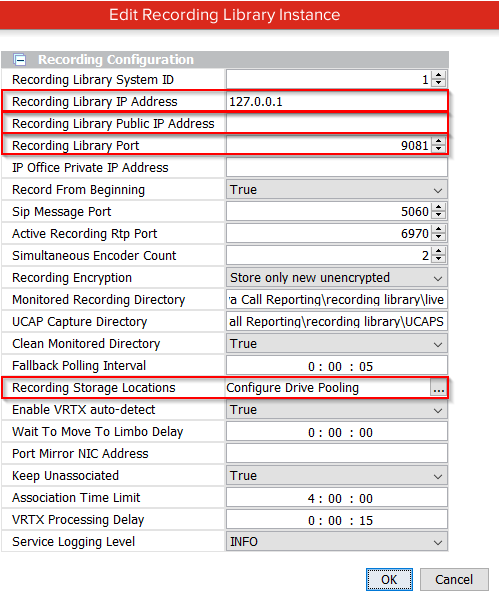
6.0. Recording Library Installation for Voicemail Pro on Windows
When installing Recording Library there are two standard choices: Devlink Active Recording and Voicemail Pro. Follow the steps under the specific section that matches your needs. This section covers the steps to install and configure Recording Library for Voicemail Pro when the Voicemail Pro is installed on a Windows server. You will be installing Recording Library on the same server as the Voicemail Pro. Note that Call Recording with Voicemail Pro requires Avaya Voicemail Pro software licenses and Chronicall Recording Library licenses.
6.1. Recording Library Installation
- Download the Chronicall Apps Setup onto the Windows server that hosts the Voicemail Pro service.
- Run the Chronicall Apps Setup as an Administrator.
- Select the location where you would like the Chronicall setup files to be extracted. C: is default, but you may extract to the location of your choice.
- Read the End-User Agreement. Select "I accept the agreement" if you agree.
- Click Show Advanced and check Recording Library.
- Enter the URL to your Chronicall software. For example, if you installed Chronicall on a server with IP address 10.20.30.40, then enter http://10.20.30.40:9080.
l. Do not use localhost:9080 or 127.0.0.1:9080 if you are installing the Recording Library on the same server as Chronicall. The exact IP address and port must be specified. - Leave the default Recording System ID and press next.
- Press Install.
6.2. Recording Library Configuration
- Open Chronicall once you have installed Recording Library.
- Go to System Settings > Recording Libraries.
- Click on the ellipsis next to “Recording Libraries”.
- Select VMPro - Recording Library 1.
l. If no recording library exists, click “Add”.
II. Click on the drop-down and select “VM Pro”. - Review the following settings.
I. Recording Library IP Address: Enter the IP address of the server that the Recording Library is installed on.
II. Server Address: Enter the IP address of the server that the Chronicall is installed on.
III. Monitored Recording Directory: Enter the path to the Avaya VRL directory. This is commonly “C:\Program Files (x86)\Avaya\IP Office\vmpro\VM\VRL”.
IV. Recording Storage Locations: Configure where the recordings will be stored. The default will be the recording library directory where the Recording Library was installed. You will also be able to manage your retention policies here. - Press OK and Save.
6.3. IP Office Configuration
Decide how you’d like to recordings to be created, either at the Agent, Group, Incoming Call Route, or Account Code. The most common configuration uses Agent-Level.
Agent-Level Call Recording
- Open Avaya's IP Office -> Manager -> IP Office Configuration
- Select "User" from the middle bar.
- Select an agent whose calls you would like to record.
- In the individual agent's window, select the "Voice Recording" tab.
- Select the percentage of outbound and inbound calls to record in the Recording Outbound and Recording Inbound fields. Select "On" to record all calls. You may also change the External field to External & Internal if you wish to record internal agent calls as well.
- Select Voice Recording Library in the Destination field for both the Recording (Auto) and Recording (Manual) menus.
- Press OK -> Save -> and Merge
Group Level
- Open Avaya's IP Office -> Manager -> IP Office Configuration
- Select "Group" from the left sidebar.
- Select a group whose calls you would like to record.
- In the specific group’s menu, on the far right, select the "Voice Recording" tab.
- Select the percentage of inbound calls to record in the Recording Inbound field. Select "On" to record all calls.
- Select Voice Recording Library in the Recording (Auto) field.
- If you wish to record internal group calls as well, set Auto Record Calls to External & Internal.
- Press OK -> Save -> Merge
Incoming Call Level
- Open Avaya's IP Office -> Manager -> IP Office Configuration
- Select "Incoming Call Route" from the left sidebar.
- Select an incoming call route you would like to record.
- In the call route menu, navigate to the "Voice Recording" tab.
- Select the percentage of inbound calls to record in the Recording Inbound field. Select "On" to record all calls.
- Select Voice Recording Library in the Recording (Auto) field.
- Press OK -> Save -> Merge
Account Code Level
- Open Avaya's IP Office -> Manager -> IP Office Configuration
- Select "Account Code" from the left sidebar.
- Select an account code whose associated calls you would like to record.
- In the account code window, navigate to the "Voice Recording" tab.
- Select the percentage of outbound calls to record in the Record Outbound field. Select "On" to record all calls.
- Select Voice Recording Library in the Recording (Auto) field.
- Press OK -> Save -> Merge

7.0. Recording Library Installation for Voicemail Pro on Linux
When installing Recording Library there are two standard choices: Devlink Active Recording and Voicemail Pro. Follow the steps under the specific section that matches your needs. This section covers the steps to install and configure Recording Library for Voicemail Pro when the Voicemail Pro is installed on a Linux server. You will be installing Recording Library on a Windows server and then utilizing the Voicemail Pro’s built in FTP service to retrieve the recordings. Note that Call Recording with Voicemail Pro requires Avaya Voicemail Pro software licenses and Chronicall Recording Library licenses.
7.1. Recording Library Installation
- Download the Chronicall Apps Setup onto a Windows server that shares the same local network as the Voicemail Pro server.
- Run the Chronicall Apps Setup as an Administrator.
- Select the location where you would like the Chronicall setup files to be extracted. C: is default, but you may extract to the location of your choice.
- Read the End-User Agreement. Select "I accept the agreement" if you agree.
- Click Show Advanced and check Recording Library.
- Enter the URL to your Chronicall software. For example, if you installed Chronicall on a server with IP address 10.20.30.40, then enter http://10.20.30.40:9080.
l. Do not use localhost:9080 or 127.0.0.1:9080 if you are installing the Recording Library on the same server as Chronicall. The exact IP address and port must be specified. - Leave the default Recording System ID and press next.
- Press Install.
7.2. Recording Library Configuration for Voicemail Pro on Linux
- Open Chronicall once you have installed Recording Library.
- Go to System Settings > Recording Libraries.
- Click on the ellipsis next to “Recording Libraries”.
- Select VMPro - Recording Library 1.
l. If no recording library exists, click “Add”.
II. Click on the drop-down and select “VM Pro”. - Review the following settings.
I. Recording Library IP Address: Enter the IP address of the server that the Recording Library is installed on.
II. Server Address: Enter the IP address of the server that the Chronicall is installed on.
III. Select the ellipsis next to “Recording Library FTP Server Configuration”.
a. Check the Enable Recording Library FTP Server setting.
b. Create a Username.
c. Create a Password.
d. Press OK.
IV. Recording Storage Locations: Configure where the recordings will be stored. The default will be the recording library directory where the Recording Library was installed. You will also be able to manage your retention policies here. - Press OK and Save.
- Open the Windows Services and restart the Chronicall Recording Library service.
7.3. IP Office Configuration
Decide how you’d like to recordings to be created, either at the Agent, Group, Incoming Call Route, or Account Code. The most common configuration uses Agent-Level.
Agent-Level Call Recording
- Open Avaya's IP Office -> Manager -> IP Office Configuration
- Select "Agent" from the middle bar.
- Select an agent whose calls you would like to record.
- In the individual agent's window, select the "Voice Recording" tab.
- Select the percentage of outbound and inbound calls to record in the Recording Outbound and Recording Inbound fields. Select "On" to record all calls. You may also change the External field to External & Internal if you wish to record internal agent calls as well.
- Select Voice Recording Library in the Destination field for both the Recording (Auto) and Recording (Manual) menus.
- Press OK -> Save -> and Merge
Group Level
- Open Avaya's IP Office -> Manager -> IP Office Configuration
- Select "Group" from the left sidebar.
- Select a group whose calls you would like to record.
- In the specific group’s menu, on the far right, select the "Voice Recording" tab.
- Select the percentage of inbound calls to record in the Recording Inbound field. Select "On" to record all calls.
- Select Voice Recording Library in the Recording (Auto) field.
- If you wish to record internal group calls as well, set Auto Record Calls to External & Internal.
- Press OK -> Save -> Merge
Incoming Call Level
- Open Avaya's IP Office -> Manager -> IP Office Configuration
- Select "Incoming Call Route" from the left sidebar.
- Select an incoming call route you would like to record.
- In the call route menu, navigate to the "Voice Recording" tab.
- Select the percentage of inbound calls to record in the Recording Inbound field. Select "On" to record all calls.
- Select Voice Recording Library in the Recording (Auto) field.
- Press OK -> Save -> Merge
Account Code Level
- Open Avaya's IP Office -> Manager -> IP Office Configuration
- Select "Account Code" from the left sidebar.
- Select an account code whose associated calls you would like to record.
- In the account code window, navigate to the "Voice Recording" tab.
- Select the percentage of outbound calls to record in the Record Outbound field. Select "On" to record all calls.
- Select Voice Recording Library in the Recording (Auto) field.
- Press OK -> Save -> Merge
7.4. Voicemail Pro FTP Configuration
- Connect to the Voicemail Pro via Command Line.
l. Login to the root level of the Voicemail Pro.
ll. Enter a SFTP command to connect to the Recording Library.
a. For example, if the username I created in 7.2 was Administrator and my Recording Library IP address was 10.11.12.13, I would enter “sftp [email protected]”.
b. When prompted “Are you sure you want to continue connecting (yes/no)?” type “yes”.
c. Enter your password (the password created in 7.2) when prompted.
III. Once connected, you can enter “exit”. - Open the Voicemail Pro Client.
- Click the Administration option at the top of the screen, then hover over Preferences and select General.
- Go to the Voicemail Recording tab and enter the following settings.
I. FTP User Name: Enter the username created in 7.2.
II. FTP Password: Enter the password created in 7.2.
III. Remote FTP Location: Enter /.
IV. Remote FTP Host: Enter the IP address of the Recording Library server. - Press Test Connection to confirm the connection can be established.
- Save and Make Live the settings.
- Reboot the Voicemail Pro.
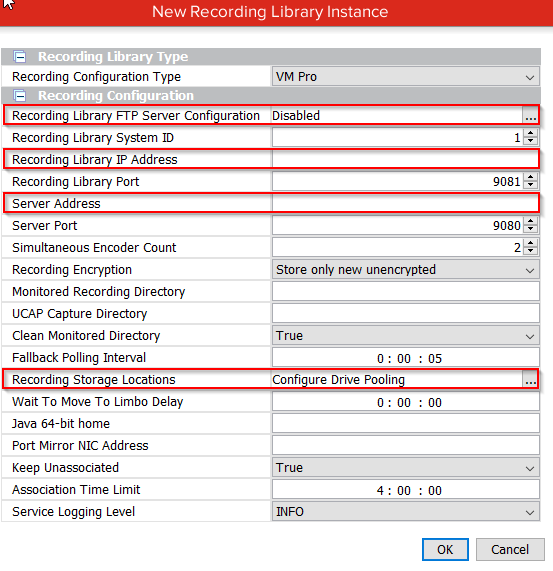

8.0. Accessing HTML Chronicall and Contact Center Agent (CCAC)
8.1. Accessing HTML version of Chronicall through a web browser
- Select the modern web browser of your choice.
I. Google Chrome is recommended. - In the URL, type in the Chronicall server IP address followed by a colon, then the Apache Tomcat port (typically 9080 by default), forward slash ‘web’.
I. Example: 12.3.4.567:9080/web
8.2. Accessing Chronicall Contact Center Agent Client
- Select the web browser of your choice. Please note that if you are going to use the CCAC as a softphone using WebRTC you must use Google Chrome or Edge.
- In the URL, type in the Chronicall server IP address followed by a colon, then the Apache Tomcat port (typically 9080 by default), forward slash ‘ccagent’
I. Example: 12.3.4.567:9080/ccagent - Select if you are going to run in a desktop mode where the CCAC connects to your desk phone or WebRTC mode where your CCAC will act as your phone.
- If running in WebRTC mode you must enter the phone password created in IP Office Manager Agent Settings.
- Enable WebRTC mode is enabled within Chronicall. This is found under System Settings > Voice Agent. Enable WebRTC and click save.
In order to use WebRTC, you must first enable https for Chronicall. To do so:
Before Configuring WebRTCIn order to configure WebRTC, Chronicall requires the use of both ports 80 and 443. Please ensure that they are available.
- Open Chronicall
- Go to Admin (System) -> System Settings -> Basic Settings
- Click on the ellipses next to SSL Proxy Configuration
- Switch “SSL Proxy Enabled” to “True”
- Type in the Chronicall Server IP address in the blank field
- Copy the “DNS Record”
- Hit “OK”
- Hit “Save”. This may take up to five minutes to go into effect.
- Once in effect, the “DNS Record” will be the new URL you will use to access the Contact Center Agent Client. Paste the “DNS Record” in the URL followed by “/ccagent”
I. Example: je9qt7cpdkathtuuqkdl.acr.ximasoftware.com/ccagent - Hit enter, and you will now be taken to the Contact Center Agent Client.
Updated 2 months ago